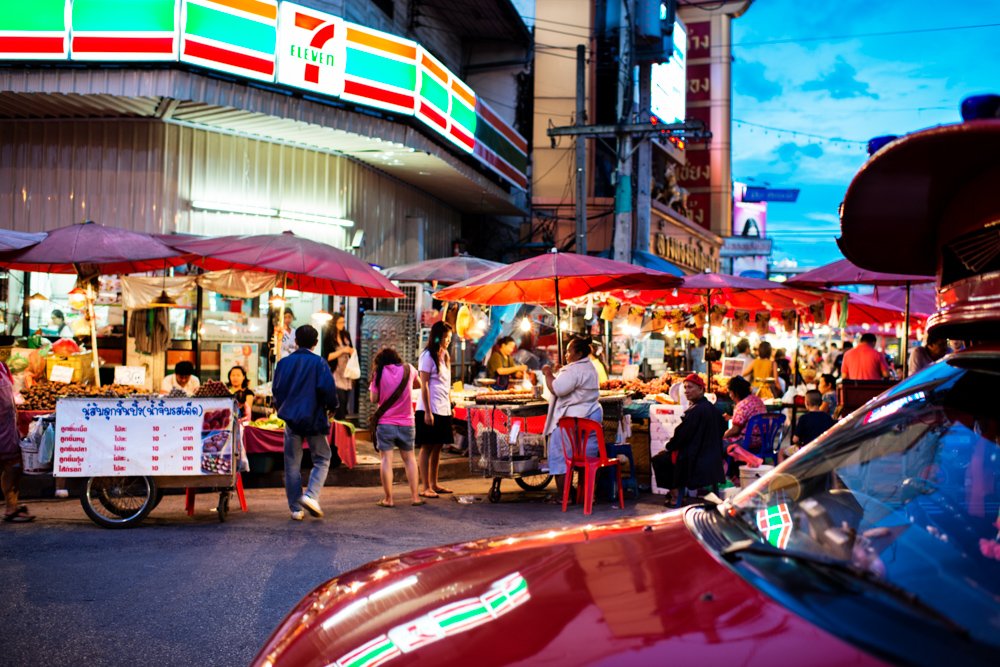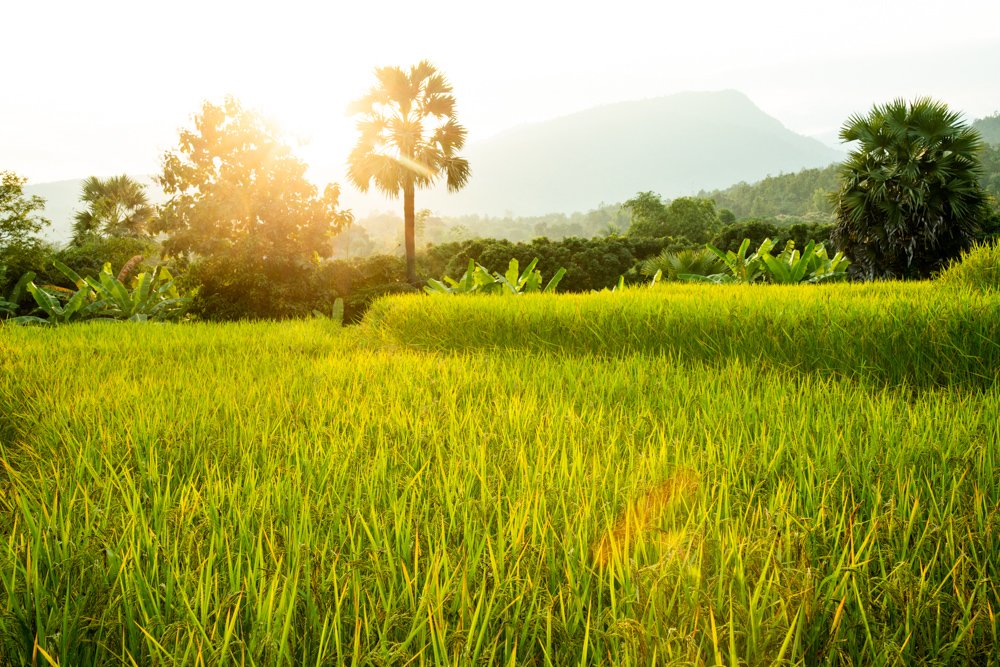How To Compose the Best Photos – Fill The Frame

by
Kevin Landwer-Johan

Composition is one of the most essential aspects of photography to master. Fill the frame with what matters and you’ll be making the best photos. Design the content within your frame and your photos will be outstanding.
Rules of composition are taught, by many, to be broken. I prefer to encourage you to learn the rules so well you can use them intuitively. Don’t set out to break them, but learn to implement them when they are most appropriate.
One rule not taught so often is to fill the frame. Do this consistently as it’s the single most vital composition rule. You need to be aware of your entire frame for a great composition.

Why You Need To Fill The Frame
Photographs have the most impact when the frame is full of elements relative to the image. If you fill the frame with extraneous stuff your photo will be weak. Following all the other rules of composition will not make better photos if your frame is full of irrelevant visual information. Fill the frame refers to including only what matters. This can also include negative space.
Make sure that whatever is in your frame is relevant to the photo you are taking. If there are elements in your frame that don’t support the visual story you are telling, or are distracting, get rid of them. They will only dilute your photographs.
What you include in your composition, and what you exclude from it, form your visual story. The way you arrange the elements in your frame expresses the tone of your message.

Photographing a Person
Photographing a person, for example. You might choose to come in very tight to their face, composing so half of it is cropped out. The frame is overflowing with their face. Maybe then you’ll step back a few paces and make a head and shoulders photo of them. Their head filling the frame.
Moving further back and you’ll include the full individual. They will not completely fill the frame because the dimensions are different. Whatever else is included in the frame will either complement or challenge your main subject. An off center placement can be balanced even by negative space. Doing this well will result in the viewer’s attention remaining on your subject.
The choice you make for what else is included in the frame will help shape the tone of the portrait. Moving further away from your subject, or using your zoom lens to include more, this choice becomes more influential because it will take up more of the frame than your subject. Often when you move back and use a telephoto lens you’ll see more bokeh blur in the background.

How To Best Fill Your Frame
Painters freely fill their canvas with whatever they choose. Artists working in oils even have the luxury of being able to overpaint elements as many times as they like. If they wish to replace a goldfish with a rubber chicken, or a smile with a frown, they can.
Photographers can do this with digital manipulation. When we are making our compositions in-camera, we do not have this flexibility. Unless we have complete control over our compositions, such as in a studio, we must arrange what fills our frame carefully.
Most of the time we will want our main subject of the photograph to fill a significant portion of the frame. But it does not have to. Photographic exploration will lead you to new ways to fill the frame. Experiment and explore different ways to frame your subject. It does not need to occupy the entire frame. You can leave negative space and still fill the frame well.
You focal point is very important. When you focus will draw the viewer’s attention. Beginning photographers often overlook the need to control the focal point. The camera will automatically focus on the closest element in the frame. This is not always going to be your main subject.
What you exclude from your photos is often as important as what you include. You can use a number of techniques to eliminate unwanted elements from your compositions.

Eliminate Unwanted Elements
Change Your Point of View
1. Changing your point of view is an easy way to avoid seeing unwanted things in your photos. Even a slight movement of your camera, up, down, left or right alters what you see in your composition. Doing this you can crop out elements at the edges of your frame. You can hide background objects behind things in the foreground. You can manipulate what’s included and what’s not.
Sometimes you will need to completely change your point of view by walking around your main subject. When the background of your composition overwhelms your subject look for an angle with less distraction.
Don’t only use the first point of view you think of. Seek out alternatives. Closing one eye, or looking through your camera will help you see how the relationship between elements will look in your photos.

Create a Shallow Depth of Field
2. Create a shallow depth of field. Use a wide enough aperture to blur out distractions in your frame. Even if this results in a lot of empty, negative space in your photograph, it’s better than leaving in conflicting elements.
Using a wide aperture helps to create bokeh. Blur in the background can help isolate a single main subject well. Using a telephoto lens will reduce the depth of field and increase the amount of background blur.
When you make a close up composition this will also have an effect on the amount of blur. Moving physically closer to your subject means the background will be more blurry than when you are further back. This is so if you are using a wide angle lens or a longer lens.
Get Closer
3. Change your lens focal length or zoom with your feet. Get closer to or back away from your subject.
A wider lens takes in more of a scene. Elements in the scene will seem more spread out when using a wider focal length. Moving around will alter the relationships between them.
Longer focal length lenses give the appearance of compressing things together in your frame. You will also be looking at a narrower field of view, so it’s easier to crop out unwanted stuff.
Physically getting in closer with a wide lens, or further back with a long lens will produce images with different compositions. What is included and excluded will be affected by your lens choice and your distance from your subject.
I like photographing people, especially environmental portraits, with a 35mm lens. This allows me to be closer to them and still see a reasonable amount of their surroundings.

Move Stuff
4. Move unwanted objects so they are not in view. I often clear trash and other things from my compositions. Light-colored items and bright colors can be most distracting and often it is easy to pick them up and remove them.
Make sure to look what’s in your entire frame. Many beginning photographers only look at their subject and miss things. They only see them when they look at the final image later.
Negative Space in Your Photographs
Filling your frame does not mean every part of it must be stuffed. Using negative space in your photos well can enhance your subject.
Wide scenes with one main element as the focus can be very powerful. Use the space to lead the viewer’s eye to your subject. Negative space is an effective tool used in art, design, architecture, and sculpture often. It can be used equally well to improve photographic composition as well. Even when you aim to fill the frame.
Empty space around your subject can help fill the frame while drawing attention to it. It can give it breathing room and allow the viewer’s imagination to fill in the blanks. The entire frame does not need to busy. The main subject may fill only a small portion of your composition and you can still fill the frame well.
Looking at the negative space is as important as considering your main subject.

The Rule of Thirds and Other Rules Remain Relevant
Don’t disregard other aspects and rules of composition when you are thinking about filling the frame. Use the rule of thirds, leading lines, strong diagonals, etc. in framing your photography. Make sure they are appropriate and don’t use them unless they add strength.
Off center composition can work very well. You can use negative space or have something else in the background that’s not totally in focus. You can even have your subject spill outside the frame.
Applying rules of composition purely because they are there does not mean your photographs will be better. Sometimes a photo will be stronger when your main subject is centralized. Other times lines will not lead anywhere near your subject. Don’t force them to.
Applying rules of composition rigidly by the book leads to bland or confusing photographs. Observe what you are seeing and arrange everything within your frame in a pleasing manner, whether or not rules are adhered to.

Practice Filling Your Frame
Learning to fill your frame by photographing a single subject in as many ways as you can is a positive exercise. This will help you see the variety of different ways you can compose a picture.
Choose a subject that will be central to your photos. Make a whole series of images. Look for different angles. Don’t photograph it only from the first point of view you think of. This will be the most obvious one every photographer will choose.
Work your subject. Move around it. Crouch down. Get up above it if you can. Use your camera horizontally and vertically. Tilt it to fit your subject in the frame alternatively.
Look at the edges and in the corners of your frame each time you compose. Consider what you are seeing and the relationship of the elements in view.
Come in closer to your subject. Back away from it. Place it on the thirds. Frame it centrally. Zoom in so some of your main subject is cropped. Include only half of your subject and leave a large amount of negative space in your photograph.

Filling the Frame is a Major Tool in Your Kit
Neglecting to fill the frame leads to weak images. Use this composition tool well in every photograph you make. When you do, you’ll be making better photos every time.
An interesting subject does not always make an interesting photograph. You are in control of that. Good composition will enhance even the most mundane subject. So, when you have a great subject, good composition can make it really pop.

Hi Kevin,
Just wanted to let you know that your articles published here is one of the best if not the best article I have read on photography and obviously really enjoyed reading about the simplicity of your studio among all the other tips that you have provided. Actually got to read the second post as well and enjoyed that too. I am sure as I attempt to apply some of your tips my photography skills will improve.
Thanks
Thanks so much for your feedback. It’s good to know what I share has encouraged you.